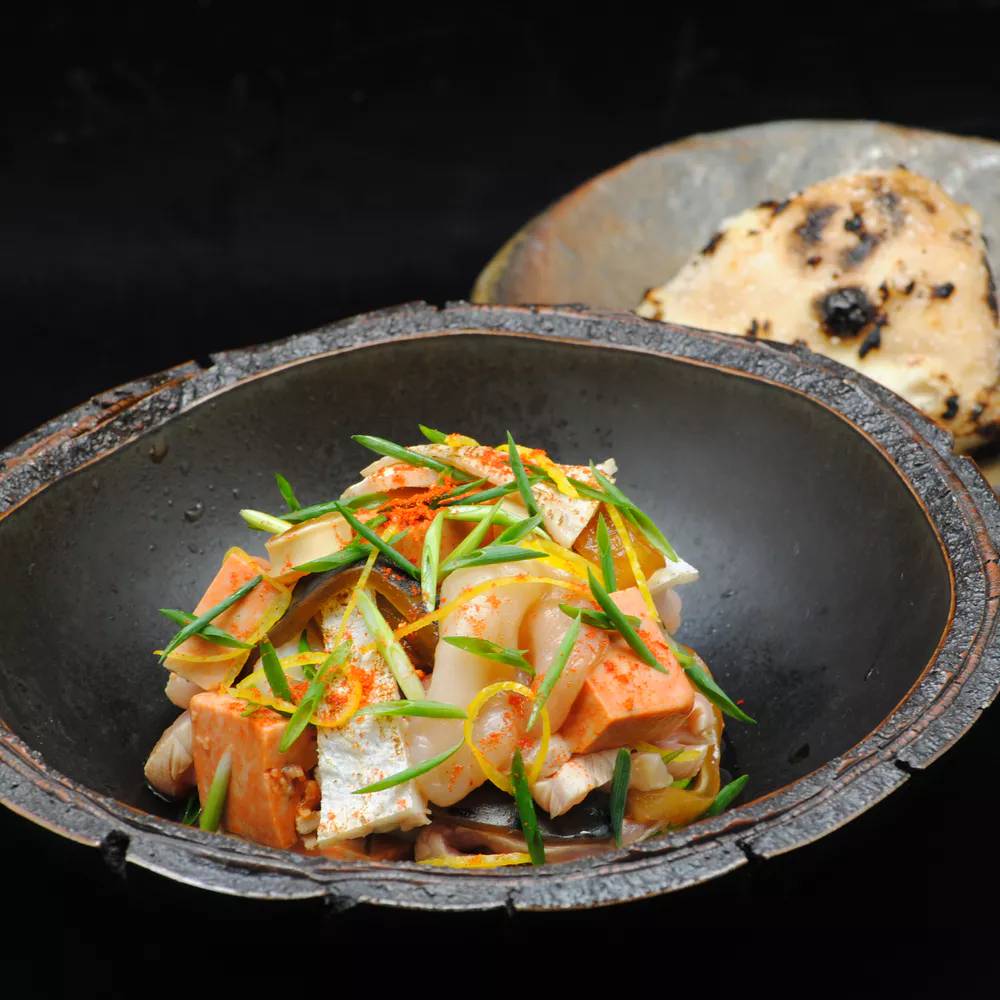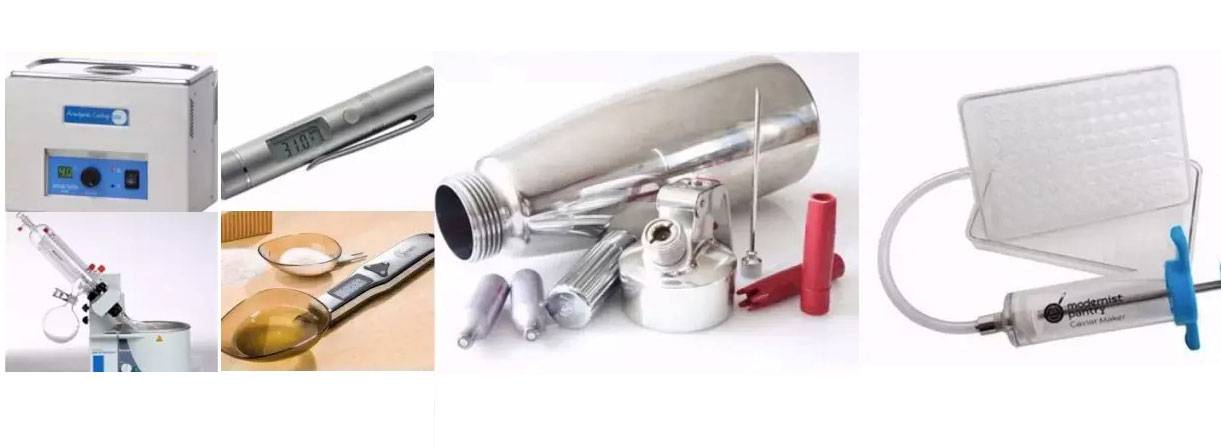Introduction to Molecular Cuisine
Definition and Popularity
Molecular cuisine, often referred to as molecular gastronomy, represents a revolutionary approach to cooking that merges culinary artistry with scientific precision. This innovative discipline delves into the scientific principles underlying cooking techniques, enabling chefs to manipulate and control these processes with unprecedented accuracy. By applying numerical precision and scientific understanding, molecular cuisine transforms traditional cooking methods into a highly controlled and experimental practice.
The popularity of molecular cuisine has surged due to its ability to create visually stunning and conceptually innovative dishes. This culinary movement has captured the imagination of both chefs and diners, leading to the establishment of renowned establishments like Ryugin in Japan. Ryugin, a Michelin-starred restaurant, exemplifies the pinnacle of molecular cuisine, offering elaborate dishes that push the boundaries of conventional gastronomy.
One of Ryugin's signature creations, the Ryugin strawberry, encapsulates the essence of molecular cuisine's appeal. This dish, priced at 800 RMB, showcases the meticulous attention to detail and scientific innovation that define the genre. Through such creations, molecular cuisine not only elevates the dining experience but also challenges traditional perceptions of food and flavor.
In essence, molecular cuisine has become a symbol of culinary innovation, blending science with creativity to redefine the possibilities of the kitchen. As it continues to evolve, it promises to inspire new generations of chefs and food enthusiasts, further cementing its status as a leading force in contemporary gastronomy.
Ryugin Restaurant Example
Ryugin, a Michelin-starred restaurant located in Japan, stands out as a beacon of culinary innovation, particularly in the realm of molecular cuisine. Renowned for its meticulously crafted dishes, Ryugin exemplifies the fusion of traditional Japanese culinary techniques with cutting-edge scientific methods. One of its most iconic creations is the "Ryugin strawberry," a dish that encapsulates the essence of molecular gastronomy, selling for a premium price of 800 RMB.
This strawberry dish is not merely a fruit; it is a symphony of flavors and textures meticulously orchestrated by Chef Seiji Yamamoto. The dish often involves a multi-step process that includes dehydration, infusion, and precise temperature control, transforming the humble strawberry into a complex and luxurious experience. Each element of the dish is designed to engage the senses, from the initial visual appeal to the nuanced interplay of flavors on the palate.
The high price tag of the Ryugin strawberry reflects not only the quality of the ingredients but also the extensive research and development that goes into its creation. It serves as a testament to the restaurant's commitment to pushing the boundaries of what is possible in the culinary world, blending science and artistry to deliver a dining experience that is both innovative and unforgettable.

Historical Development
Early Interest in Food Science
The 1970s marked a pivotal era in the culinary world, as mankind's curiosity about the scientific properties of food began to flourish. This period saw a significant shift from traditional cooking methods to a more analytical and experimental approach, laying the groundwork for what would later be termed molecular cuisine. The emergence of scientist-chefs like Ferran Adria exemplifies this transition, where culinary artistry began to intertwine with scientific principles.
Ferran Adria, often regarded as the pioneer of molecular gastronomy, spearheaded this movement by integrating scientific methodologies into his cooking. His approach was not merely about creating new dishes but about understanding the underlying chemical and physical processes that occur during cooking. This scientific curiosity led to groundbreaking innovations, transforming the way chefs perceived and manipulated food.
The fusion of science and cooking during this time was not limited to a few isolated experiments but became a foundational element in the evolution of modern cuisine. Chefs began to view the kitchen as a laboratory, where every ingredient and technique could be scrutinized and optimized. This shift not only enhanced the precision and predictability of culinary outcomes but also opened up a world of possibilities for flavor combinations and textures that were previously unimaginable.
In essence, the 1970s set the stage for a culinary revolution, where the boundaries between science and cooking were blurred, giving rise to a new era of gastronomic exploration and innovation.
Scientific Approach to Cooking
Ferran Adria's approach to cooking revolutionized the culinary world by transforming the kitchen into a laboratory for experimentation. This method, rooted in scientific principles, focused on meticulously understanding and controlling the underlying processes that influence food. Adria's techniques were not merely about creating new flavors or textures; they were about grasping the chemical and physical transformations that occur during cooking.
For instance, Adria's experiments with temperature and its impact on protein denaturation led to groundbreaking discoveries in how food could be prepared. By precisely controlling these variables, he was able to manipulate the texture, taste, and appearance of dishes in ways that were previously unimaginable. This scientific rigor allowed for the creation of dishes that were not only innovative but also deeply rooted in a profound understanding of the science behind them.

Moreover, Adria's work extended beyond simple experimentation; it involved a comprehensive study of ingredients and their interactions. He utilized advanced laboratory equipment, such as rotary evaporators, to extract and concentrate flavor and aroma molecules, thereby crafting unique and complex dishes. This fusion of scientific precision and culinary creativity set the stage for a new era in gastronomy, where the boundaries between science and cooking were continuously pushed and expanded.
Innovations in Molecular Cuisine
Experimental Techniques
In the realm of molecular cuisine, experimental techniques are the backbone of culinary innovation. One notable example is the meticulous redesign of hard-boiled eggs, which serves as a vivid demonstration of protein denaturation at various temperatures. By precisely controlling the cooking process, chefs can showcase the transformation of egg proteins from a liquid state to a solid, revealing the intricate stages of denaturation. This technique not only educates diners about the scientific principles behind cooking but also elevates the dining experience to a multisensory journey.
Another groundbreaking technique involves the use of hydrocolloids, which are substances that can create entirely new textures in dishes. Hydrocolloids, such as agar-agar and xanthan gum, can transform liquid ingredients into gels, foams, or even powders, allowing chefs to manipulate the texture and mouthfeel of their creations. For instance, a simple soup can be transformed into a light, airy foam that bursts with flavor, or a savory sauce can be turned into a delicate gel that melts in the mouth. This innovative approach to texture manipulation opens up endless possibilities for culinary experimentation, enabling chefs to craft dishes that are not only visually stunning but also offer unique and surprising gastronomic experiences.
These experimental techniques are not just about novelty; they are rooted in a deep understanding of the scientific processes that govern food. By applying principles from chemistry, physics, and biology, molecular chefs are able to push the boundaries of traditional cooking, creating dishes that are both scientifically accurate and artistically compelling. This fusion of science and creativity is what makes molecular cuisine a true culinary revolution, one that continues to inspire and challenge the world's top chefs.
New Ingredients and Equipment
In the realm of molecular cuisine, the integration of advanced laboratory instruments and novel ingredients has revolutionized the culinary landscape. Modernist chefs, often inspired by the precision and methodology of scientific experimentation, employ tools such as rotary evaporators to meticulously extract and concentrate flavor and aroma molecules. This process not only enhances the intensity of traditional ingredients but also allows for the creation of entirely new, unique dishes that defy conventional gastronomic boundaries.
For instance, rotary evaporators are used to separate volatile compounds from liquid mixtures at reduced pressures, thereby preserving the delicate essences of ingredients. This technique is particularly valuable in the development of complex flavor profiles, where subtle nuances can make or break a dish. By isolating and concentrating these elements, chefs can achieve a level of flavor complexity that was previously unattainable through traditional cooking methods.
In addition to rotary evaporators, modernist chefs utilize a variety of other laboratory-grade equipment, such as centrifuges and vacuum ovens, to manipulate the physical and chemical properties of food. These tools enable chefs to control the texture, consistency, and even the molecular structure of their dishes, leading to innovative textures and presentations that captivate diners.
Moreover, the use of hydrocolloids—substances that can alter the viscosity and stability of food—has become a cornerstone of molecular cuisine. Hydrocolloids like agar-agar and xanthan gum allow chefs to create gels, foams, and other textural elements that add layers of interest to their creations. This scientific approach to ingredient manipulation not only pushes the boundaries of traditional cooking but also invites a deeper exploration of the sensory possibilities within food.
The combination of these cutting-edge tools and ingredients reflects a broader trend in contemporary cuisine: the blurring of lines between the kitchen and the laboratory. As chefs continue to embrace scientific principles, the future of molecular cuisine promises even more groundbreaking innovations, redefining what is possible in the world of gastronomy.
Impact and Future of Molecular Cuisine
Culinary and Scientific Collaboration
Molecular cuisine is a testament to the seamless fusion of scientific precision and culinary creativity. This innovative approach transforms the kitchen into a dynamic laboratory where chefs, much like scientists, meticulously control and manipulate the chemical and physical processes that occur during cooking. The synergy between culinary artistry and scientific rigor allows for the creation of dishes that are not only visually stunning but also push the boundaries of taste and texture.
In this culinary laboratory, chefs employ a range of scientific techniques and modernist tools, such as rotary evaporators and hydrocolloids, to extract and enhance flavors, and to create novel textures. This scientific intervention is not merely about replicating known flavors but about discovering new ones, often through controlled experimentation. For instance, the redesign of a hard-boiled egg to exhibit different states of protein denaturation at various temperatures is a prime example of how molecular cuisine challenges traditional cooking methods and introduces innovative culinary concepts.
Moreover, the collaboration between chefs and scientists has led to the development of new ingredients that were previously unimaginable in traditional cooking. These ingredients, often derived through advanced scientific processes, allow chefs to craft dishes that are both unique and sophisticated, thereby elevating the dining experience to an entirely new level. This interdisciplinary approach not only enriches the culinary landscape but also fosters a deeper understanding and appreciation of the science behind the food we eat.

Challenges and Innovations
The pursuit of challenging innovation lies at the heart of molecular cuisine, driving chefs to explore new ways of perceiving flavors and creating unique dishes that push culinary boundaries. This innovative spirit is not merely about experimenting with new ingredients or techniques; it is about redefining the very essence of taste and texture.
One of the primary challenges in this domain is the constant need to innovate while maintaining the integrity of traditional flavors. Chefs must balance the desire to create something entirely new with the need to preserve the authenticity of the ingredients. This balance is often achieved through meticulous scientific research and experimentation.
For instance, the use of hydrocolloids and other scientific tools allows chefs to manipulate textures in unprecedented ways. Imagine a dish that transitions from a liquid state to a solid in the mouth, offering a sensory experience that defies conventional expectations. Such innovations not only challenge the diners' perception of food but also open up new avenues for culinary expression.
Moreover, the integration of laboratory instruments like rotary evaporators enables chefs to extract and concentrate flavor and aroma molecules, leading to dishes with intense and novel flavor profiles. This scientific approach transforms the kitchen into a veritable laboratory, where creativity and precision science converge.
In this ever-evolving field, the challenges are as stimulating as the innovations they inspire. Each new dish is a testament to the relentless pursuit of culinary excellence, where the boundaries of taste and texture are continually redefined.
